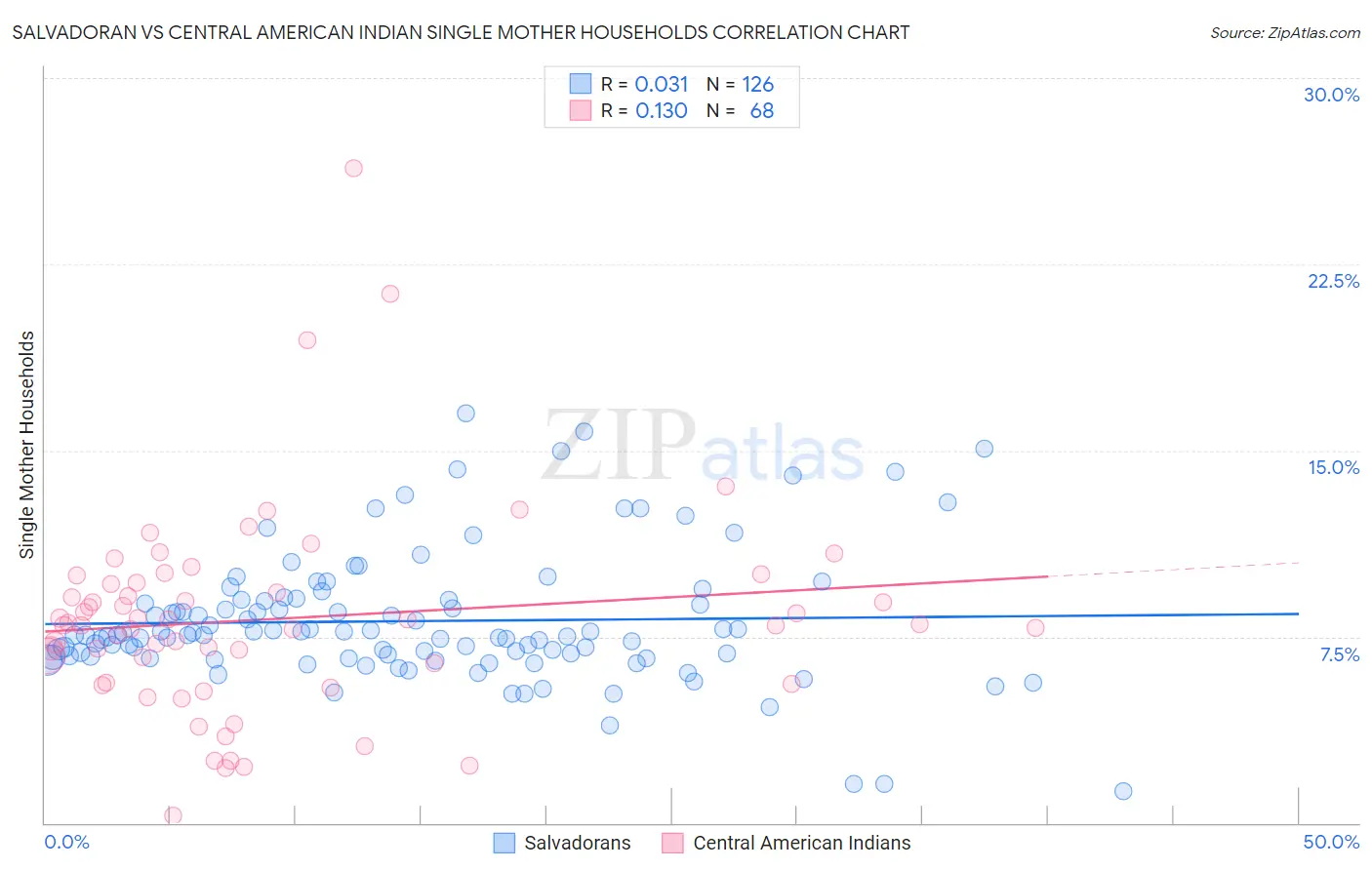Salvadoran vs Central American Indian Single Mother Households
COMPARE
Salvadoran
Central American Indian
Single Mother Households
Single Mother Households Comparison
Salvadorans
Central American Indians
7.5%
SINGLE MOTHER HOUSEHOLDS
0.1/ 100
METRIC RATING
271st/ 347
METRIC RANK
7.6%
SINGLE MOTHER HOUSEHOLDS
0.1/ 100
METRIC RATING
275th/ 347
METRIC RANK
Salvadoran vs Central American Indian Single Mother Households Correlation Chart
The statistical analysis conducted on geographies consisting of 398,116,409 people shows no correlation between the proportion of Salvadorans and percentage of single mother households in the United States with a correlation coefficient (R) of 0.031 and weighted average of 7.5%. Similarly, the statistical analysis conducted on geographies consisting of 325,810,321 people shows a poor positive correlation between the proportion of Central American Indians and percentage of single mother households in the United States with a correlation coefficient (R) of 0.130 and weighted average of 7.6%, a difference of 0.46%.

Single Mother Households Correlation Summary
| Measurement | Salvadoran | Central American Indian |
| Minimum | 1.3% | 0.29% |
| Maximum | 16.5% | 26.4% |
| Range | 15.3% | 26.1% |
| Mean | 8.1% | 8.2% |
| Median | 7.6% | 8.0% |
| Interquartile 25% (IQ1) | 6.7% | 6.0% |
| Interquartile 75% (IQ3) | 9.0% | 9.6% |
| Interquartile Range (IQR) | 2.3% | 3.6% |
| Standard Deviation (Sample) | 2.6% | 4.2% |
| Standard Deviation (Population) | 2.6% | 4.1% |
Demographics Similar to Salvadorans and Central American Indians by Single Mother Households
In terms of single mother households, the demographic groups most similar to Salvadorans are Immigrants from the Azores (7.5%, a difference of 0.0%), Immigrants from Cuba (7.5%, a difference of 0.090%), Somali (7.5%, a difference of 0.25%), Belizean (7.6%, a difference of 0.32%), and Immigrants from Guyana (7.6%, a difference of 0.36%). Similarly, the demographic groups most similar to Central American Indians are Immigrants from Guyana (7.6%, a difference of 0.10%), Belizean (7.6%, a difference of 0.14%), Immigrants from the Azores (7.5%, a difference of 0.45%), Guyanese (7.6%, a difference of 0.45%), and Immigrants from Trinidad and Tobago (7.6%, a difference of 0.49%).
| Demographics | Rating | Rank | Single Mother Households |
| Immigrants | Nicaragua | 0.2 /100 | #263 | Tragic 7.4% |
| Yaqui | 0.1 /100 | #264 | Tragic 7.4% |
| Crow | 0.1 /100 | #265 | Tragic 7.4% |
| Nepalese | 0.1 /100 | #266 | Tragic 7.5% |
| Blackfeet | 0.1 /100 | #267 | Tragic 7.5% |
| Indonesians | 0.1 /100 | #268 | Tragic 7.5% |
| Somalis | 0.1 /100 | #269 | Tragic 7.5% |
| Immigrants | Cuba | 0.1 /100 | #270 | Tragic 7.5% |
| Salvadorans | 0.1 /100 | #271 | Tragic 7.5% |
| Immigrants | Azores | 0.1 /100 | #272 | Tragic 7.5% |
| Belizeans | 0.1 /100 | #273 | Tragic 7.6% |
| Immigrants | Guyana | 0.1 /100 | #274 | Tragic 7.6% |
| Central American Indians | 0.1 /100 | #275 | Tragic 7.6% |
| Guyanese | 0.1 /100 | #276 | Tragic 7.6% |
| Immigrants | Trinidad and Tobago | 0.1 /100 | #277 | Tragic 7.6% |
| Central Americans | 0.1 /100 | #278 | Tragic 7.6% |
| Immigrants | El Salvador | 0.0 /100 | #279 | Tragic 7.6% |
| Immigrants | Sierra Leone | 0.0 /100 | #280 | Tragic 7.7% |
| Immigrants | Laos | 0.0 /100 | #281 | Tragic 7.7% |
| Guatemalans | 0.0 /100 | #282 | Tragic 7.7% |
| Nigerians | 0.0 /100 | #283 | Tragic 7.7% |